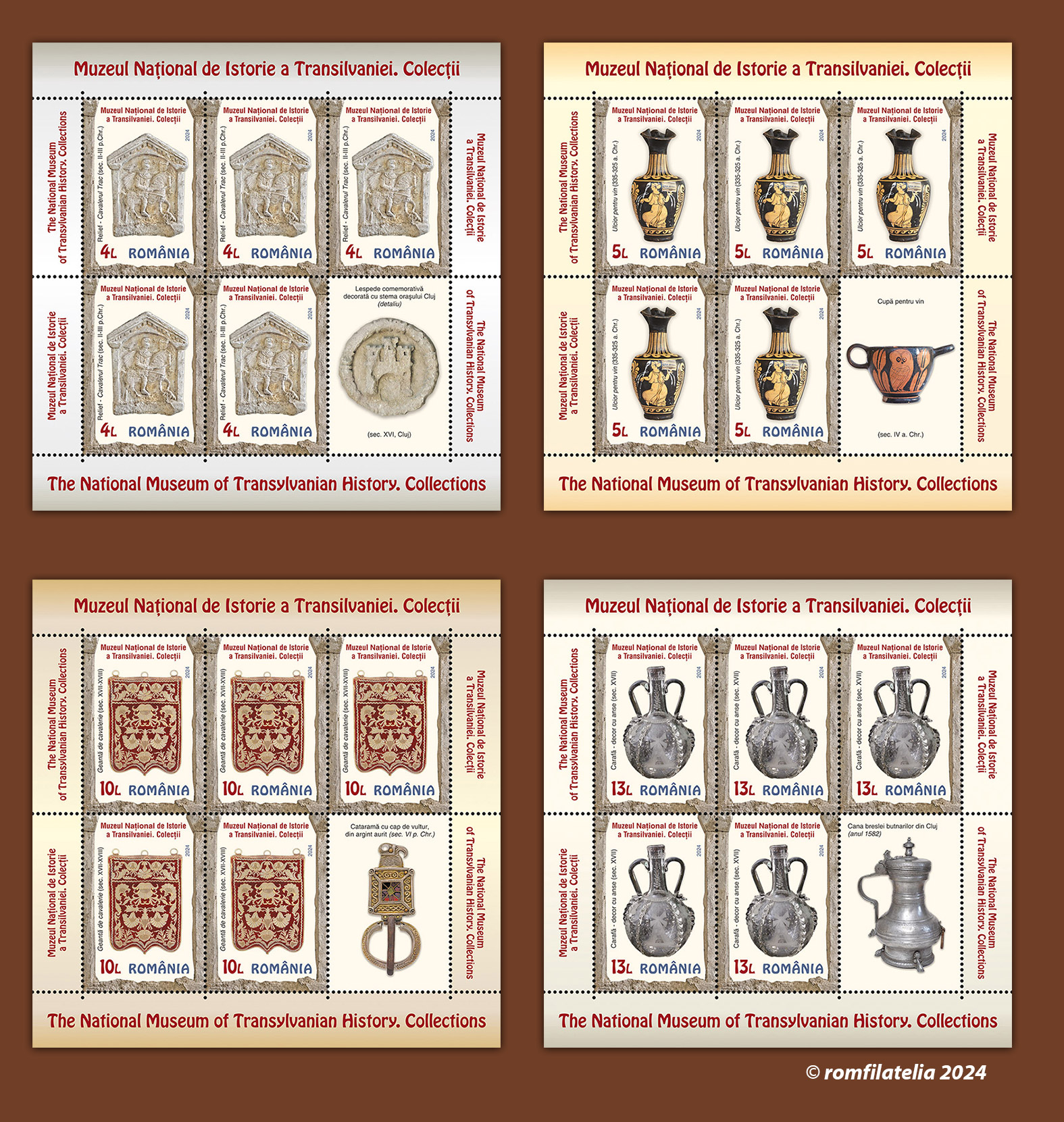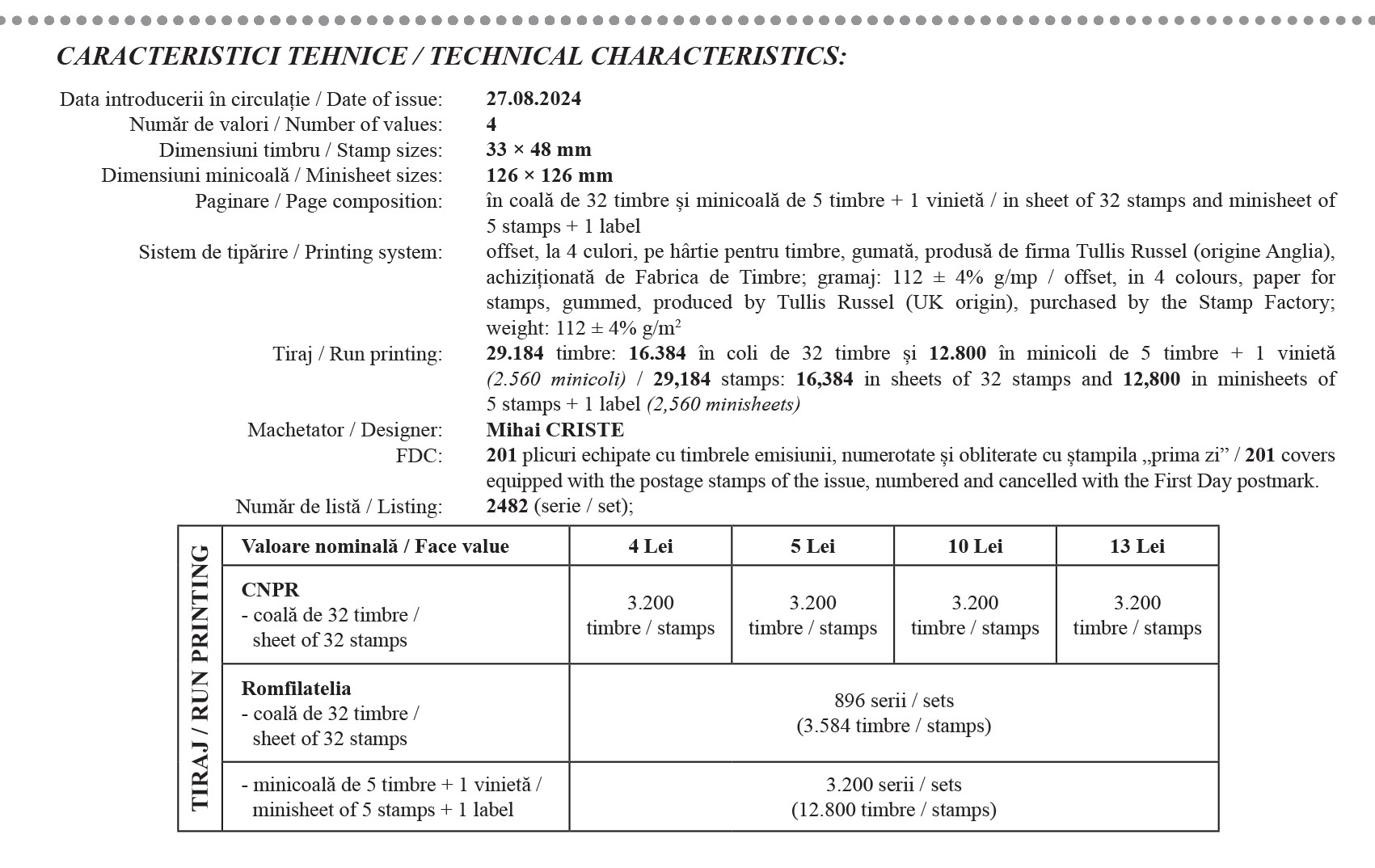 Romfilatelia introduces into circulation on Tuesday, August 27th this year, a new issue of postage stamps entitled The National Museum of Transylvanian History. Collections, consisting of four postage stamps and a First Day Cover.
Romfilatelia introduces into circulation on Tuesday, August 27th this year, a new issue of postage stamps entitled The National Museum of Transylvanian History. Collections, consisting of four postage stamps and a First Day Cover.
Subject of the country’s history, the collections of the museum reflect periods that include areas of art, culture, crafts and the existence of historical civilizations, starting with the period of antiquity, up to the present day.
The heritage of the museum, with over 450,000 pieces, confers this institution of Transylvania a leading role in the field of culture, education and building a new identity. Bringing together the stories of the hundreds of thousands of items in its collection, the museum outlines the history and identity of Transylvania, which we invite you to discover.
The National Museum of Transylvanian History was established as an independent institution in 1963, when it received the name of Cluj History Museum. The museum institution had inherited valuable archaeological, numismatic and historical collections from the Transylvanian Museum Society, established in 1859, and the Museum of Antiquities, established in 1933. In its current location, the museum began operating in 1912, being subjected over time to several stages of transformation and modernization. Since 1994, the museum institution has been classified as being of national importance.
From the multitude of cultural assets, postage stamps reproduce the following exhibits in their images:
The stamp with the face value of Lei 4 illustrates a relief with the image of the Thracian Knight belonging to the Roman era from the 2nd-3rd century AD discovered in Gilău (Cluj County).
The stamp with the face value of Lei 5 reproduces the image of a wine jug (oenochoe in ancient Greek), provenance: Magna Graecia (southern Italy), 335-325 BC.
The stamp with the face value of Lei 10 presents a Cavalry bag (sabre bag) in leather and velour, decorated with silver thread, 17th-18th centuries.
On the stamp with the face value of Lei 13 is reproduced a glass decanter, 17th century, provenance: Porumbacu archaeological site (Sibiu County).
The First Day Cover reproduces the image of the headquarters of The National Museum of Transylvanian History in the background. In the foreground are rendered the images of a bronze mask worn on equestrian parades, belonging to the Roman era, 2nd century AD (Gilău archaeological site, Cluj County), respectively of a ceramic vessel with four lobes, 16th-14th centuries BC (Cluj-Napoca archaeological site).
Romfilatelia would like to thank the specialists from the National Museum of Transylvanian History for the documentary support offered in the development of this issue of postage stamps.



